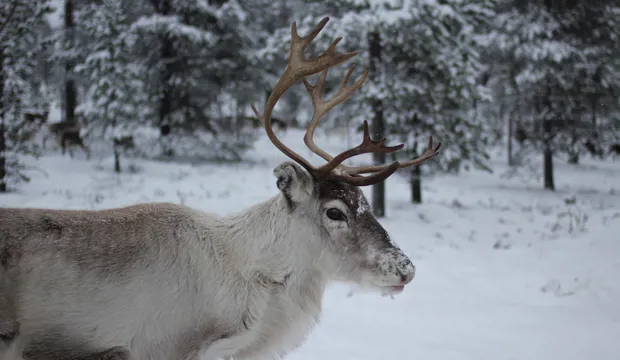
How does Santa's sleigh fly?
Four forces are needed for flight. Do you know what they are?
Four important forces affect how Santa’s sleigh will fly: Drag, Thrust, Gravity and Lift.
In this fun and festive activity, students will explore these forces so that they can design and craft their own sleigh to help Santa.
Activity: How does Santa's sleigh fly?
Gravity is a force exerted by everything which has mass. The larger the mass, the larger the force of gravity, which is why the Earth has a greater force of gravity than the moon. Gravity pulls objects towards a mass. The closer you are to it, the greater the pull.
Thrust is the force that enables an object to move through the air. In Santa’s case, thrust is caused by the reindeer pulling the sleigh. Like all forces, though, it has a force acting in opposition. We call this drag. Drag is caused by the movement of an object through the air. An object with a larger surface area causes more drag, but we can minimise this by making our shape aerodynamic. Aerodynamic design allows the air particles to move smoothly past the object reducing drag.
Whilst drag is something Santa wants to reduce, the effects caused by the movement of air particles can also be beneficial to him. If he shapes part of his sleigh like an aerofoil, he can use air pressure to make his sleigh fly upwards, bring it back down, or keep it flying in a straight line.
When you point your hairdryer at the front of your aerofoil, the flow of air goes over the top and the bottom of the aerofoil. The shape of the aerofoil, however, creates differences in air pressure. The air flows faster over the top of the aerofoil than it does over the bottom as the camber creates a vortex which slows flow down.
Faster-moving air creates less pressure than slower-moving air so the higher pressure underneath the aerofoil causes it to lift.
If we bend the end of the aerofoil upwards to create a camber on the top, we can move it downwards when we flow air across it; This is how the flaps on an aeroplane wing work. We can also do the same thing by shaping and angling the rotors on a helicopter to make it move upwards or downwards.
Remember, though, the aeroplane’s movement forward through the air generates this lift. Without something to thrust it forward, it would fall from the sky.
All this means that Santa needs to do the following:
- Keep the weight down in his sleigh to minimise the effects of gravity
- Have a sleigh which is shaped aerodynamically to reduce drag
- Have something shaped on his sleigh which will allow him to change air pressure, such as an aerofoil
- Keep the reindeer well-fed and fit so they can keep his sleigh moving through the sky
Bearing this in mind, can you get to work as an engineer and design your own sleigh to help Santa deliver presents? Be creative!
Download the free How does Santa's sleigh fly? activity sheet below!
All activity sheets and supporting resources are free to download, and all the documents are fully editable, so you can tailor them to your students’ and your schools’ needs.
The activity sheet includes teacher notes, guidance, useful web links, and links (where appropriate) to the national curriculum in each of the four devolved UK nations; England, Northern Ireland, Scotland and Wales.
Oh ho ho, and please do share your sleigh designs with us @IETeducation! #SantaLovesSTEM.



